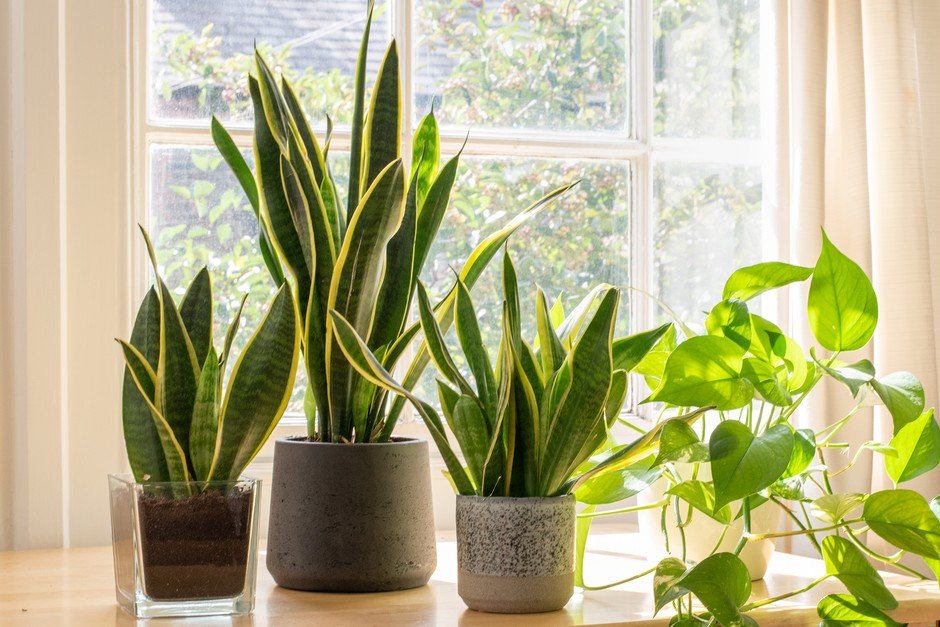How to Care for Snake Plants: Essential Tips & Tricks
Caring for snake flora involves mild watering and putting them in oblique light. Ensure right drainage to save you root rot.
Snake flora, recognized for their resilience, are a famous desire for both novices and experienced plant enthusiasts. These hardy flowers, with their striking sword-like leaves, not only upload a hint of greenery to your space but additionally purify the air.
They are adaptable to a number of lighting fixtures situations, although they thrive exceptional in indirect sunlight. Overwatering is a commonplace pitfall, so it’s crucial to permit the soil dry between waterings. With the right stability of light and water, snake flowers may be a low-preservation addition to your house or workplace, bringing existence and colour with minimum fuss. Their capacity to face up to intervals of forget about makes them especially suited for busy people who choice a touch of nature without the trouble of constant care.
Introduction To Snake Plants
Snake plant life, additionally known as Sansevieria, are extraordinarily popular for their resilience and air-purifying characteristics. These low-upkeep flora can thrive in a number of environments, making them perfect for each beginner and experienced gardeners. They’re not simplest clean to care for however additionally are available in numerous configurations and dimensions, enhancing indoor aesthetics and enhancing air fine.
| Variety Name | Description |
|---|---|
| Sansevieria Trifasciata | Known as the mother-in-regulation‘s tongue, its capabilities tall, inexperienced leaves with yellow borders. |
| Sansevieria Cylindrica | Boasts round, stiff leaves that can grow several feet long, forming a fan shape. |
| Sansevieria Kirkii | Spotlights patterned leaves and is known for its hardiness. |
Optimal Growing Conditions
Snake plants thrive in a range of light conditions. Indirect sunlight is best. Yet, they can grow in dimmer spots too. Bright, direct light should be avoided for long periods.
Warm temperatures benefit snake plants the most. They prefer temperatures between 55°F and 85°F. Cold drafts and temperatures below 50°F can harm them. Keep them away from cold windows in winter.
Watering Your Snake Plant
Snake plants thrive with minimal water. It’s crucial to water only when the soil is completely dry. Overwatering can cause root rot, making it vital to ensure proper drainage. A simple method is the bottom-up technique. Place the pot in water, allowing the plant to absorb moisture through the drainage hole. This technique encourages healthy root growth. Water sparingly during winter as growth slows down.
Mistakes often stem from too much love. Frequent watering is a common error. Snake plants need less water than most think. Use your finger to test the soil’s moisture level. Watering should happen no more than every two to three weeks, depending on the environment. High humidity calls for less frequent watering. Always use room temperature water to avoid shocking the roots.
Soil And Fertilization Needs
Snake flora thrive in nicely-draining, sandy soil. A blend of potting soil, sand, and perlite creates the suitable surroundings for root health. It’s crucial to avoid soil that holds water, as this can cause root rot.
Fertilizer boosts plant increase throughout the developing season. Use a balanced, half-strength houseplant fertilizer. Apply this every 3-four weeks in spring and summer. No need for fertilizer in fall and winter.
Potting And Repotting Essentials
Choosing the right container for your snake plant is key. A pot with drainage holes is a must. This prevents water from sitting at the bottom and harming the plant. The material of the pot also matters. Terra cotta pots are great because they allow soil dry out greater between watering. Make sure the pot isn’t always too huge. A pot slightly larger than the plant’s base is perfect.
Steps for repotting:
- Gather a new pot, fresh potting soil, and your snake plant.
- Fill the new pot about one-third full with soil.
- Carefully remove the plant from its current pot.
- Check the roots. Trim any that are dead or too long.
- Place the plant in the center of the new pot.
- Add more soil around the plant until it is secure.
- Water the plant lightly to help it settle in.

Pest And Disease Prevention
Snake plants are resilient, but they can face pests and diseases. Regularly inspect leaves and soil. Look for spider mites, mealybugs, and fungus gnats. These are common issues. Yellowing leaves might suggest a disease.
For organic control, use neem oil or insecticidal soap. Apply it directly to affected areas. Remember, overwatering promotes diseases. Ensure good air circulation and proper drainage. These practices keep plants healthy.
Pruning And Maintenance
Pruning your snake plant is crucial for its health. It’s best to prune during the spring or early summer. This timing encourages growth as the plant is in its active phase. Use clean, sharp shears for cutting.
To ensure healthy growth, remove only the damaged or overgrown leaves. Cut at the base near the soil, careful not to harm the main stalk. Regularly removing dead foliage allows for better air circulation and light reach.
| Technique | Benefit |
|---|---|
| Bright, indirect light | Promotes growth |
| Regular watering | Prevents root rot |
| Well-draining soil | Supports health |
Propagation Techniques
Division Method is easy. Start by removing your snake plant from its pot. Gently, separate the roots to make new plants. Each part should have roots attached. Plant them in fresh soil. Water them lightly.
For Leaf Cuttings, choose a healthy leaf. Cut it into sections. Each section should be about 3 inches long. Let them dry for a day. Next, plant them in soil with the cut end down. Keep the soil slightly moist. With patience, new plants will grow.
Troubleshooting Common Problems
Yellowing leaves on snake flora often signal overwatering. Ensure proper drainage and allow the soil to dry between waterings. Direct daylight can also motive leaves to yellow. Place your plant in indirect light for exceptional results. Splitting lengthy paragraphs makes the textual content less complicated to read for everybody, which includes youngsters.
Root rot is a severe problem for snake plant life. It happens when roots sit down in too much water. To repair this, put off the plant from the pot and reduce off any darkish, comfortable roots. Repot the use of fresh, properly draining soil and a smooth pot. Be sure to water sparingly and handiest while the topsoil is dry.
Decorating With Snake Plants
Snake plants elevate any room with their smooth, upright leaves. Perfect for present day and minimalistic themes, they bring a touch of greenery without overwhelming the space. Utilize cabinets or stands at varying heights to create a dynamic show.
Pairing those hardy plants with others that require comparable care makes for a cohesive appearance and eases preservation. Consider ZZ plant life or philodendrons for a nicely rounded arrangement. Both thrive in indirect light and need only occasionally watering, just like snake plants.
| Plant | Light Needs | Watering Frequency |
|---|---|---|
| Snake Plant | Low to Indirect | Every 2-6 weeks |
| ZZ Plant | Low to Bright | Every 2-4 weeks |
| Philodendron | Medium to Bright | Every 1-2 weeks |
Frequently Asked Questions
What Kind of Light Do Snake Plants Need?
Snake plants thrive in indirect sunlight but can tolerate low light conditions, making them ideal for indoor environments that don’t receive a lot of natural light.
How Often Should I Water a Snake Plant?
Water snake plants sparingly; every 2-6 weeks, allowing the soil to dry out completely between waterings to prevent root rot.
Are Snake Plants Toxic to Pets?
Yes, snake plants contain saponins, which can be toxic when ingested by pets, causing nausea, vomiting, and diarrhea. Keep them out of reach of animals.
Conclusion
Caring for snake plant life is less complicated than you might think. With proper mild, water, and soil, they thrive with minimum fuss. Remember, these resilient greens purify your air while demanding little in return. Start nurturing your snake plant today and watch it invigorate your space with ease.






